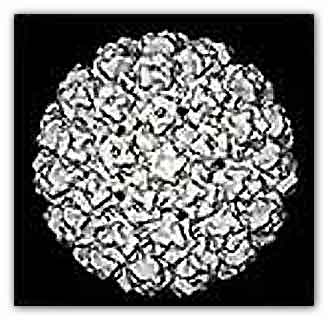|
The overall prevalence of oral human papillomavirus (HPV) infection is approximately 7 percent among men and women ages 14 to 69 years in the United States, while the prevalence among men is higher than among women.

Maura L. Gillison, M.D., Ph.D., of the Ohio State University Comprehensive Cancer Center, Columbus, and colleagues examined the prevalence of oral HPV infection in the United States. The researchers used data from a cross-sectional study as part of the National Health and Nutrition Examination Survey (NHANES) 2009-2010, a statistically representative sample of the U.S. population. Men and women ages 14 to 69 years examined at mobile examination centers were eligible.
Participants (n = 5,579) provided a 30-second oral rinse and gargle with mouthwash. For detection of HPV types, DNA purified from oral exfoliated cells was evaluated via testing
methods.
The researchers found that the overall prevalence of oral HPV infection was 6.9 percent, and the most prevalent HPV type detected was HPV16 (1.0 percent). The prevalence of oral HPV infection had peaks in different age ranges, with a first peak in prevalence observed among those 30 to 34 years of age (7.3 percent) and a second, higher peak among those ages 60 to 64 years (11.4 percent).
Men had a significantly higher prevalence than women for overall oral HPV infection (10.1 percent vs. 3.6 percent). Prevalence of HPV was higher among current smokers and heavy alcohol drinkers and among former and current marijuana
users.
The authors also found that oral HPV prevalence was associated with several measures of sexual behavior, including higher prevalence among individuals who reported ever having had sex vs. not (7.5 percent vs. 0.9 percent). Prevalence of HPV increased with lifetime or recent number of partners for any kind of sex, vaginal sex, or oral sex.
The researchers write that their data provide evidence that oral HPV infection is predominantly sexually transmitted. "Taken together, these data indicate that transmission by casual, nonsexual contact is likely to be
unusual."
"Oral HPV infection is the cause of a subset of oropharyngeal [relating to the mouth and pharynx] squamous cell carcinomas (OSCC).
Human papillomavirus—positive OSCC are associated with sexual behavior in contrast to HPV-negative OSCC that are associated with chronic tobacco and alcohol use.
At least 90% of HPV-positive OSCC are caused by high-risk (or oncogenic) HPV type 16 (HPV16), and oral infection confers an approximate 50-fold increase in risk for HPV-positive OSCC. The incidence of OSCC has significantly increased over the last 3 decades in several countries, and HPV has been directly implicated as the underlying cause," according to background information in the article. "Although oral HPV infection is the cause of a cancer that is increasing in incidence in the United States, little is known regarding the epidemiology of infection."
"Our results have important research as well as public health implications. Natural history studies of cervical HPV infection were essential for the development of public health interventions, such as HPV vaccination to prevent and HPV detection to screen for cervical cancer," they write. "Natural history studies of oral HPV infection are therefore necessary to understand the effects of age, sex, and modifiable risk factors (e.g., smoking and sexual behavior) on the incidence and duration of oral HPV infection."
"...vaccine efficacy against oral HPV infection is unknown, and therefore vaccination cannot currently be recommended for the primary prevention of oropharyngeal cancer.
An analysis of U.S. cancer registry data recently projected that the number of HPV-positive oropharyngeal cancers diagnosed each year will surpass that of invasive cervical cancers by the year 2020; perhaps such vaccine trials are warranted. Such trials could inform ongoing discussions regarding the benefits of HPV vaccination for males, given the higher prevalence of oral HPV infection demonstrated here as well as higher incidence of HPV-positive OSCC among men," the authors conclude.
Source
JAMA doi:10.1001/jama.2012.101.
(MDN)
|
![]()